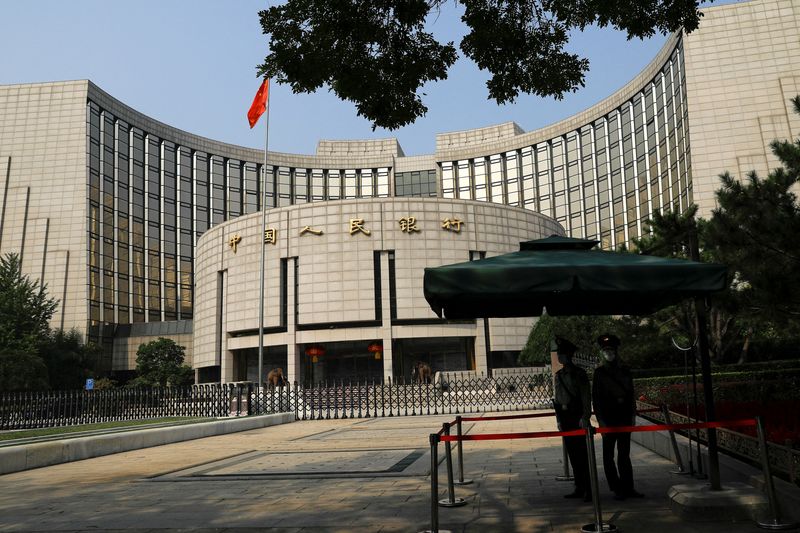China expected to leave benchmark lending rates unchanged despite Fed easing
SHANGHAI (Reuters) -China is expected to leave benchmark lending rates unchanged for the fourth month in a row next Monday, a Reuters survey showed, after the central bank kept a key policy rate steady following the U.S. Federal Reserve’s rate cut.
Despite a string of recent data suggesting the Chinese economy is losing momentum, authorities appear to be not in a rush to roll out major stimulus measures amid resilient exports and a recent stock market rally, market watchers said.
The loan prime rate (LPR), normally charged to banks’ best clients, is calculated each month after 20 designated commercial banks submit propose rates to the People’s Bank of China (PBOC).
In a Reuters survey of 20 market watchers this week, all respondents expected both the one-year and five-year LPRs to remain steady on Monday at 3.00% and 3.5%, respectively.
“The LPRs won’t be adjusted given any changes should follow reductions in the policy rate,” said a trader at a brokerage, referring to the seven-day reverse repo rate that now serves as the main policy rate.
China’s central bank left the seven-day reverse repo rate unchanged on Thursday, following the Fed’s decision to reduce rates.
Most new and outstanding loans in China are based on the one-year LPR, while the five-year rate influences the pricing of mortgages. China cut both rates by 10 basis points in May.
“While the broad-based deterioration in July-August activity data increased the urgency to introduce new stimulus, we remain cautious about the size of any new fiscal stimulus,” analysts at Barclays said in a note, adding chances of fresh fiscal stimulus could be reduced if the trade truce between Washington and Beijing holds.
Still, some analysts expect marginal monetary easing later this year will ensure the world’s second-largest economy will hit the government’s annual growth target of “around 5%.”
“The two months of poor data from July and August should convince policymakers to take more action to stabilize the economy,” said Larry Hu, chief China economist at Macquarie.
“To be sure, these measures should be incremental, as policymakers don’t need major stimulus to reach the 5% GDP target. In our view, they don’t want to miss the target, but they won’t want to overachieve it, either.”
Hu expects a 10-basis-point rate cut by year-end.
(Reporting by Shanghai Newsroom; Editing by Kim Coghill)



Leave a Comment
Your email address will not be published. Required fields are marked *